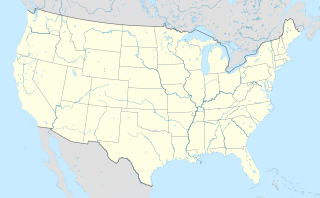 W
WThe Atlantic coastal plain is a physiographic region of low relief along the East Coast of the United States. It extends 2,200 miles (3,500 km) from the New York Bight southward to a Georgia/Florida section of the Eastern Continental Divide, which demarcates the plain from the ACF River Basin in the Gulf Coastal Plain to the west. The province is bordered on the west by the Atlantic Seaboard Fall Line and the Piedmont plateau, to the east by the Atlantic Ocean, and to the south by the Floridian province. The Outer Lands archipelagic region forms the insular northeasternmost extension of the Atlantic coastal plain.
 W
WCapers Island is a state-owned barrier island on the Atlantic Ocean in Charleston County, South Carolina about 15 miles north of the city of Charleston. It is separated from the mainland by salt marshes and the Intracoastal Waterway. To the southwest it is separated from the barrier island Dewees Island by Capers Inlet. To the northwest, it is separated from the barrier island Bulls Island by Price Inlet.
 W
WDeveaux Bank is a horseshoe-shaped sand spit island encompassing a 215-acre (87-hectare) bird sanctuary at the mouth of the North Edisto River in Charleston County, South Carolina. It is located on the Atlantic Coast between Edisto Island, South Carolina and Seabrook Island, South Carolina. Its average elevation is three feet. It has approximately 2.75 miles of sandy beaches on three sides and a tidal lagoon on the side facing the mainland.
 W
WThe East Coast of the United States, also known as the Eastern Seaboard, the Atlantic Coast, and the Atlantic Seaboard, is the coastline along which the Eastern United States meets the North Atlantic Ocean. Regionally, the term refers to the coastal states and area east of the Appalachian Mountains that have shoreline on the Atlantic Ocean, from north to south, Maine, New Hampshire, Massachusetts, Rhode Island, Connecticut, New York, New Jersey, Delaware, Maryland, Virginia, North Carolina, South Carolina, Georgia, and Florida.
 W
WThe Great Valley, also called the Great Appalachian Valley or Great Valley Region, is one of the major landform features of eastern North America. It is a gigantic trough—a chain of valley lowlands—and the central feature of the Appalachian Mountain system. The trough stretches about 1,200 miles (1,900 km) from Quebec to Alabama and has been an important north-south route of travel since prehistoric times.
 W
WThe Johnsonville crater or the Snow's Island crater is a circular geophysical feature situated at the junction of the Lynches River and the Pee Dee River in South Carolina, United States, which has been interpreted by some scientists as an impact crater. Snow's Island, at that point, is believed to be the upthrust formed at the center of the crater after the impact. The structure is approximately 8 miles (13 km) in diameter, but is not well defined at the surface. It was discovered by magnetic anomalies, supported by the study of well drilling cores. Supposed impact breccia was found in these cores. The Russian Academy of Sciences lists the structure as a proven impact crater, though the Earth Impact Database (EID) does not list it as confirmed.
 W
WPocosin is a type of palustrine wetland with deep, acidic, sandy, peat soils. Groundwater saturates the soil except during brief seasonal dry spells and during prolonged droughts. Pocosin soils are nutrient-deficient (oligotrophic), especially in phosphorus.